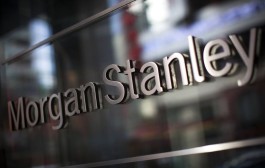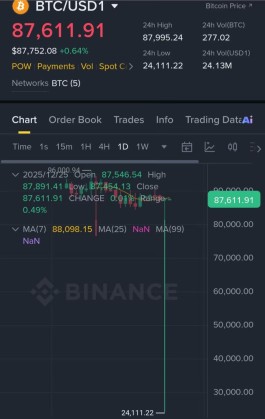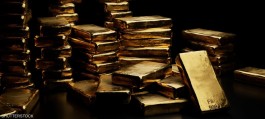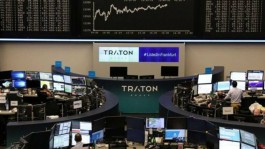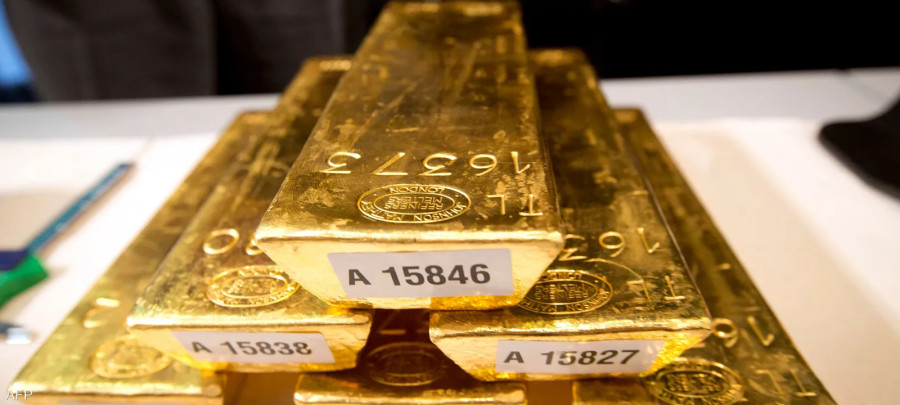Gold prices closed higher for the third week in a row, despite the decline that dominated gold movement during the second half of the week due to the recovery of the dollar, but investors remained in anticipation of the outcome of the next meeting of the US Federal Bank.
An ounce rose during spot trading by 0.4%, after recording during the week the highest level in 9 weeks at $1987 an ounce, to close the week's trading at the level of $1961 an ounce.
The technical report of Gold Billion revealed the main reason behind the significant rise in gold prices during the past week, as US retail sales data for the month of June revealed an increase of 0.2%, less than expectations and the previous reading at 0.5%, which indicates a decline in consumer spending and the beginning of the emergence of the negative impact of US interest rate hikes on spending levels.
He mentioned that the June jobs report, in addition to last week's retail sales and inflation data, have all greatly increased the expectations in the markets that the Fed will resort to halting the rate hike cycle after its next meeting.
The Gold Billion report indicated that the gold market is awaiting the results of the meetings of the US Federal Reserve, the European Central Bank and the Central Bank of Japan, in addition to the data of the core personal consumption expenditures index for the United States, which is the preferred measure of inflation for the Federal Bank.
And the expectations were confirmed to a degree that reaches certainty that the US Federal Bank will raise interest rates by 25 basis points before stopping the cycle of raising interest and monetary tightening, which the bank had not previously declared, so that the markets await the bank’s report and the press conference of its president to resolve these expectations.
Inflation data during the month of June in the United States showed a sharp slowdown in inflation, as the consumer price index rose by 3%, which is the slowest pace of inflation in two years, and the core consumer price index, which does not include volatile food and energy prices, rose by 4.8%, which is the slowest rise since 2021.
The noticeable decrease in inflation and the expected gradual decline in the labor market during the second half of the year may convince the Federal Reserve to raise interest rates once during its next meeting and end monetary tightening during the second half of the year.
The Federal Bank has indicated on more than one occasion that its decisions will depend on the data, and that the US economy is able to overcome this crisis without falling into an economic recession, and in light of the data that shows a slowdown in growth rates and consumer spending, and the bank may end the tightening policies that have continued since last year and pushed interest rates to their highest levels in more than 15 years, and this scenario supports gold greatly, because the first challenge for gold is to raise the interest that attracts investments away from gold markets that do not provide a return in favor of bond markets that offer a return that rises with high interest rates.
Gold will face an important week that may affect its movements in the short term. The Fed's adherence to the policy of monetary tightening may push gold to decline significantly, and the bank's cessation of tightening and ending the interest-raising cycle may push gold to complete the rise and surpass the psychological level of $2,000 an ounce.
Anti-fall support
In the event that the Federal Reserve’s moves differ with the market’s expectations and it continues to tighten monetary policy and raise interest rates again after its meeting next week, we will witness a significant negative impact, of course, on gold prices, and this may push it to lose many of its previous gains and move away again from the level of $2000 an ounce.
But gold has enough support that prevents it from a sharp collapse, and this support is represented in the actual demand for gold by global central banks. Continuous purchases of gold by global central banks is considered the first and main supporter of gold during the current year.




















